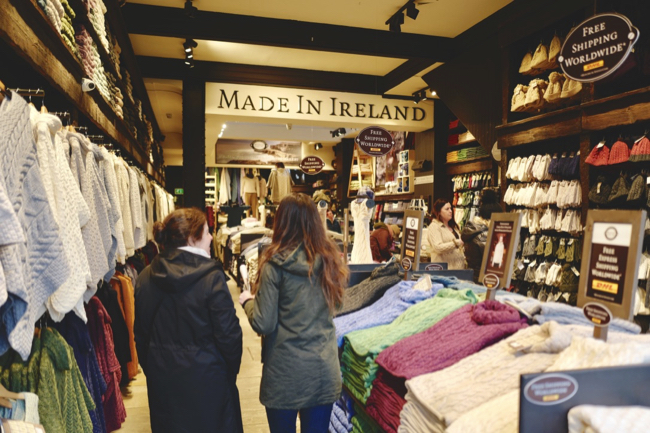Dublin and Belfast
An example for a city trip to Dublin and Belfast for 5 days.
For a city trip to Dublin and/or Belfast, you can fly from Amsterdam to Dublin in an hour and a half. If you book the flight and hotel via http://expedia.com, you are usually cheaper.

You can take a taxi, private car or bus from the airport to the center of Dublin. The cheapest way is taking the Airlink Express buses. This double decker bus takes you to the center in 20 minutes. https://dodublin.ie/airport-transfers/airlink-express. The boarding locations can be found directly in front of terminals 1 and 2. The Airlink buses run on 2 different routes (747 and 757). The tickets for the bus cost € 7 one way and € 12 return and can be bought at the travel information desk, at the spar, at vending machines at the bus stop or online. If you buy your bus ticket online, print it out. If you board with this voucher, you will receive a ticket for the return journey from the driver. Take a look at the return journey where you have to get on again. We were dealing with changing the route, but Google Maps did not notice this.
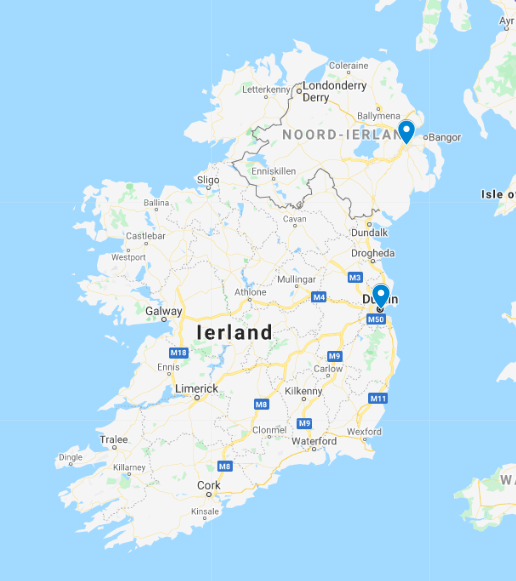
In Dublin we had booked a room in the ‘Temle Bar Inn’. https://www.templebarinn.com. This hotel is centrally located near the entertainment district ‘Temple Bar’ and near Trinity college. You do not necessarily have to book a breakfast of € 10 or € 15, because fresh sandwiches and fruit are easily available in the Tesco below the hotel. Coffee and tea are available free of charge in the room and at the reception.
Glutenfree suggestions see: https://captureplaces.com/glutenvrij-eten-in-dublin/
You can book various tours at the hotel, at the tourist information or online, but we like to take a free city walk. You can often find these walks online or in your travelguide. These walks takes you along the main sights. You will immediately get a picture of the city.
Sightseeing Dublin
O’Connell Street
In the middle of O’Connell street are all kinds of monuments and statues, including the O’Connell monument and The Spire. The spire (the needle) was originally intended to add luster to the new millennium in the year 2000, but due to delay it was only completed in 2003. This stainless steel needle is 120 meters high and has a diameter of 3 meters at the foot and 15 cm at the top.

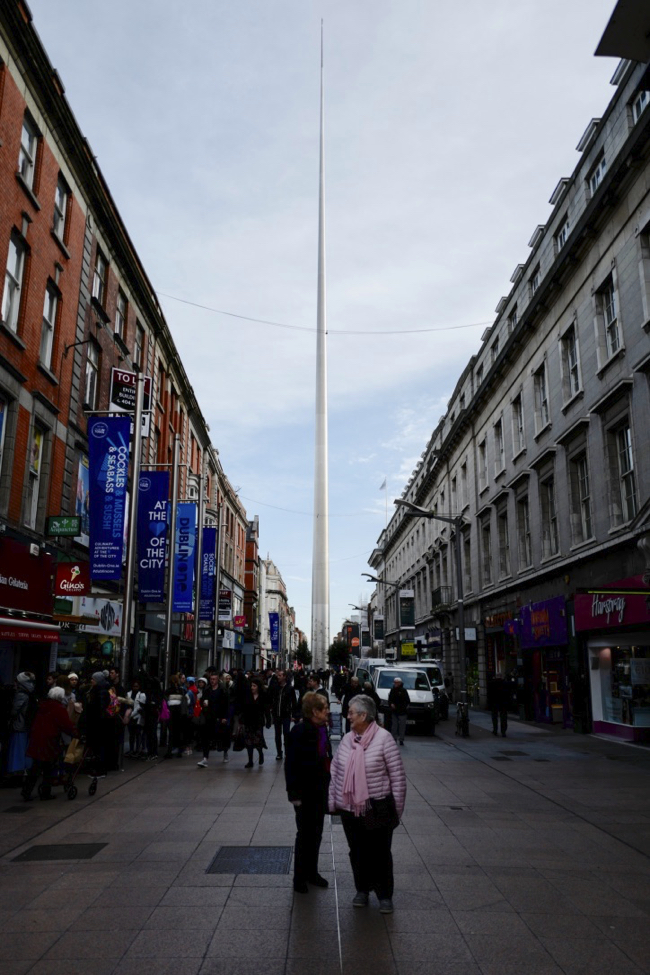
General Post Office
The iconic post office from 1818 is a recognizable building in the city thanks to its 76-meter-long facade and colonnade. During the Easter Revolt of 1916, this was the headquarters and was destroyed by fire. The reconstruction happened at the start of the Irish Free State government.
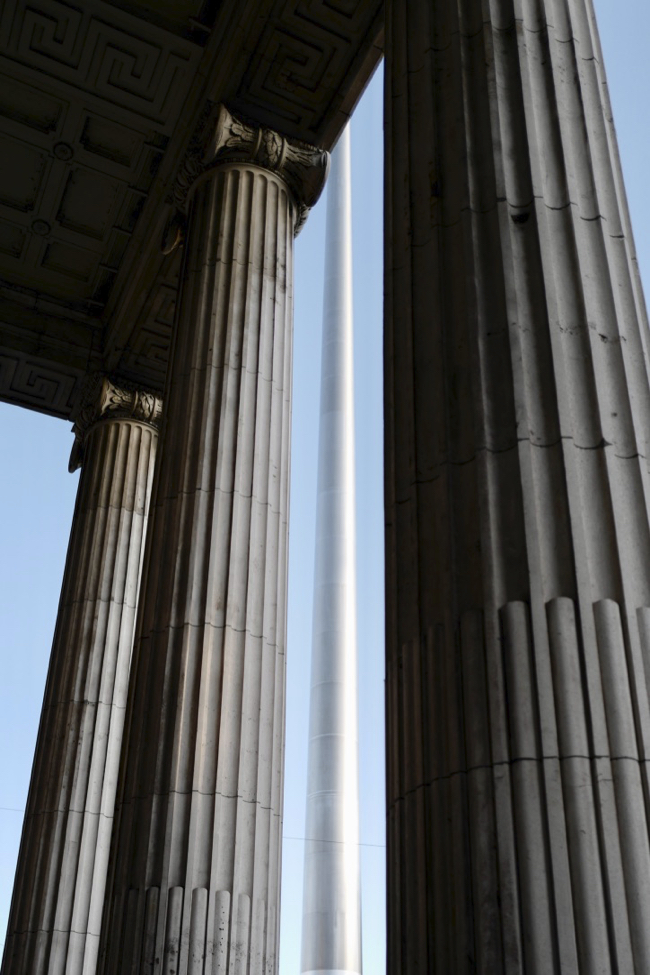
St Mary’s Church
This church has a different destination from 1986. Today it is a restaurant and a pub. Nice to have a drink in a pew. Even the organ is still in place.

Ha’penny Bridge
The Ha’penny bridge is the first iron bridge over the Liffey. It was built in 1816. To build this bridge, passengers were taken to the other side by ferry. The ferry owner chose to make a bridge and was allowed to charge half a penny toll on anyone crossing the bridge for 100 years. The toll was lifted in 1919, but the name stayed.
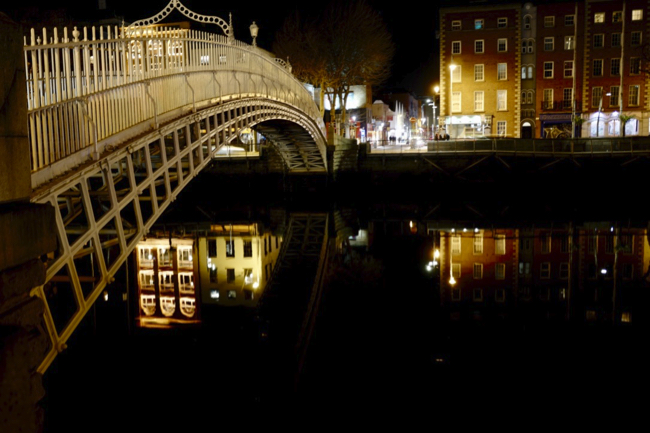

Temple Bar
Temple Bar is Dublin’s entertainment district. it has a vibrant nightlife that is particularly popular with tourists. There are many pubs and restaurants, where live music is also played daily. The prices for a beer are high priced.
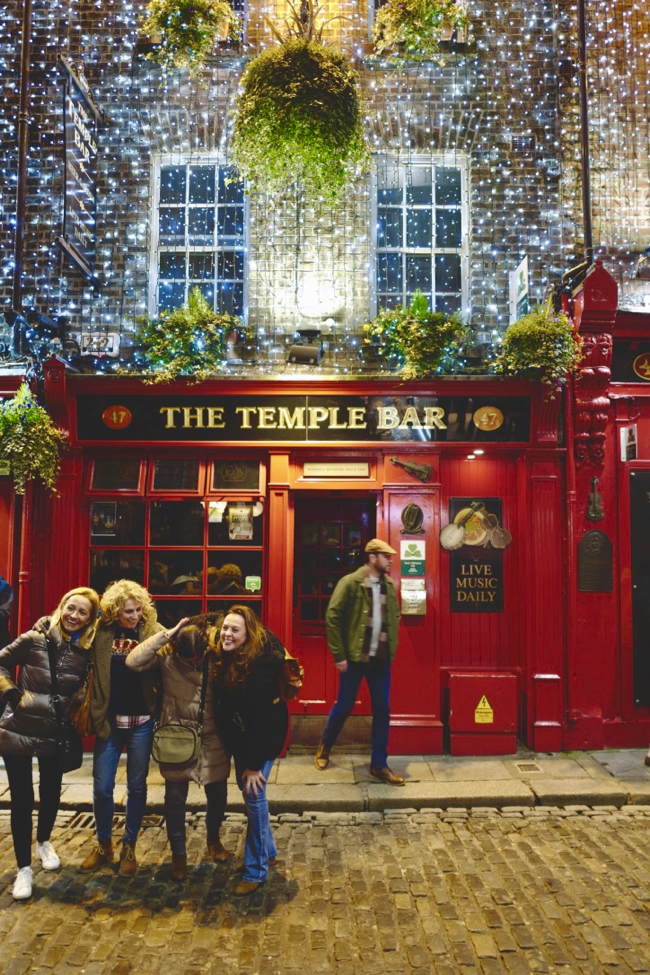
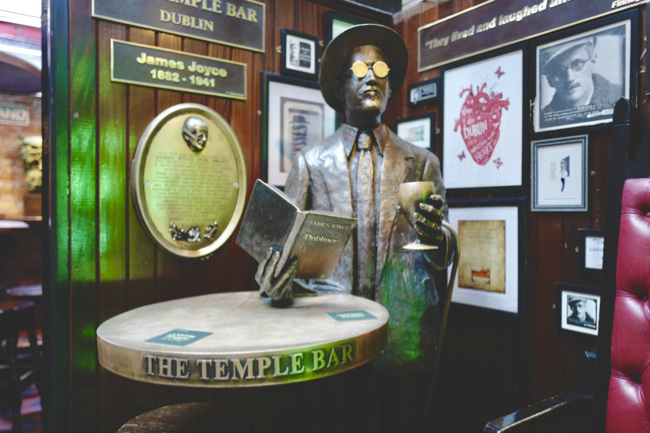
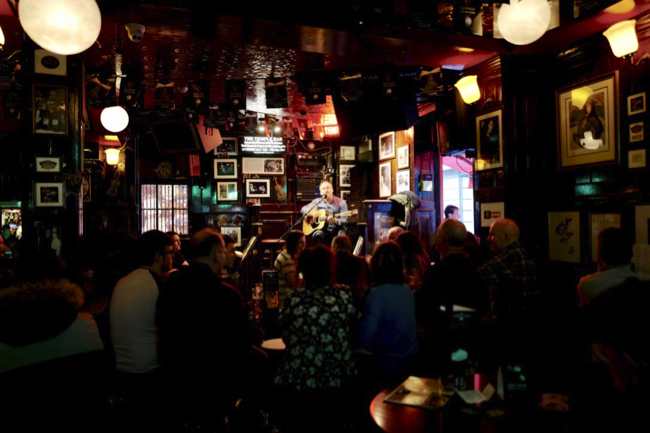
Pubs
While in Dublin you should definitely visit a pub, we chose a pub outside the ‘Temple Bar’ area called Darkey Kelly’s Pub, which also featured live music on a weekday and gluten-free beer. You can also eat here https://darkeykellys.ie

Christ Church Cathedral
Christ Church Cathedral is the oldest of 2 medieval cathedrals in Dublin. It was built around 1030 and renovated in the 19th century. It is therefore difficult to say which parts really date from the Middle Ages. You can visit the cathedral for € 8. There is a stone archway from the cathedral to Dublinia. This is a museum about Dublin during the Middle Ages and the Vikings.
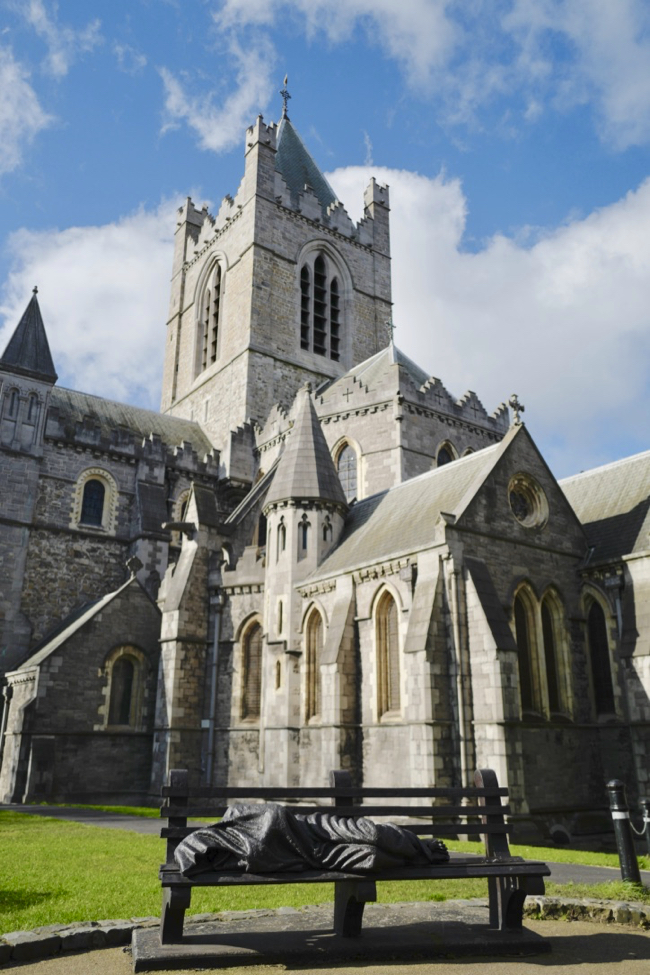
Dublin Castle
Dublin Castle is not one complex, but consists of several buildings. Most of the buildings date from the 18th century. Only the Record Tower is the only remnant of the original castle. It is now an important building complex for the Irish government.
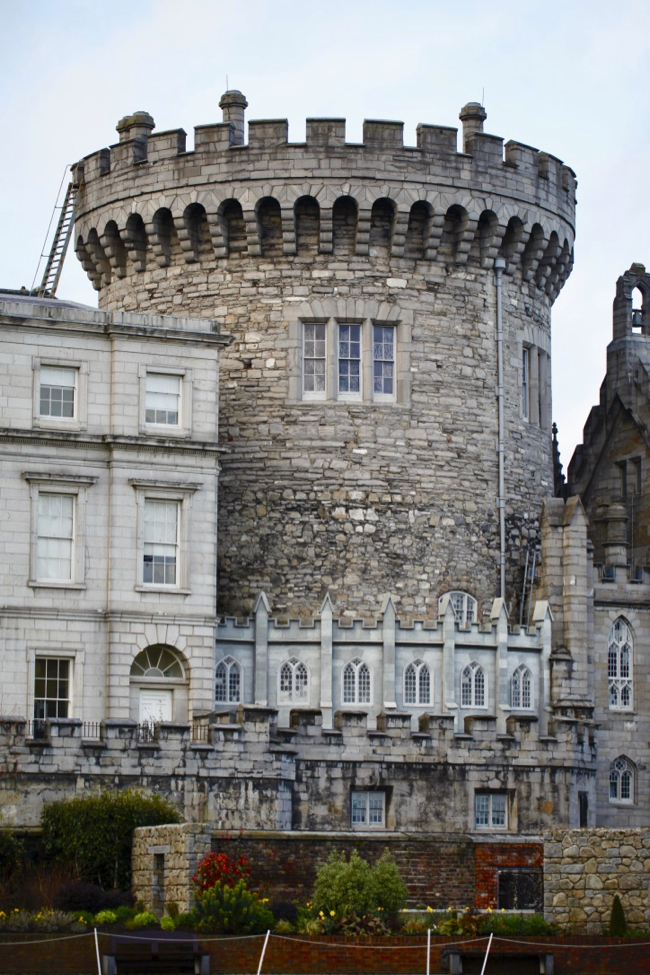
Molly Malone
Molly Malone is a character from the song ‘In Dublin’s Fair City’
https://www.youtube.com/watch?v=ruNdU6bGE5E
In the song, Molly is a fishmonger selling her goods on the streets of Dublin. Molly’s bosom has been touched so often that the bronze is somewhat affected 🙂
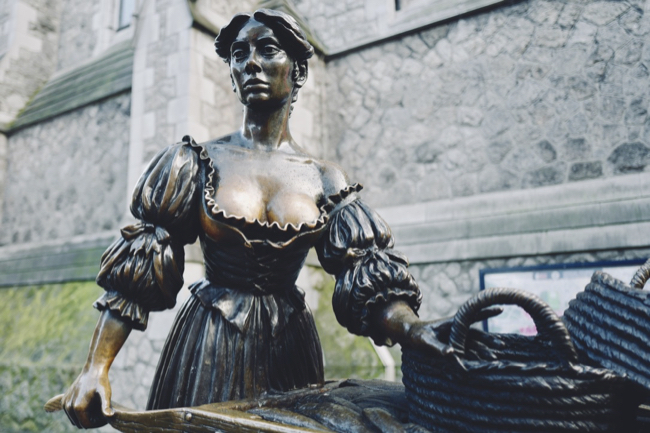
Famine Memorial
These impressive statues on the Custom House Quay are a memorial to the great famine that killed about a million Irish people between 1845 and 1850 and caused another million to emigrate. Ireland was heavily dependent on potatoes at the time, but the crop was lost due to late blight.
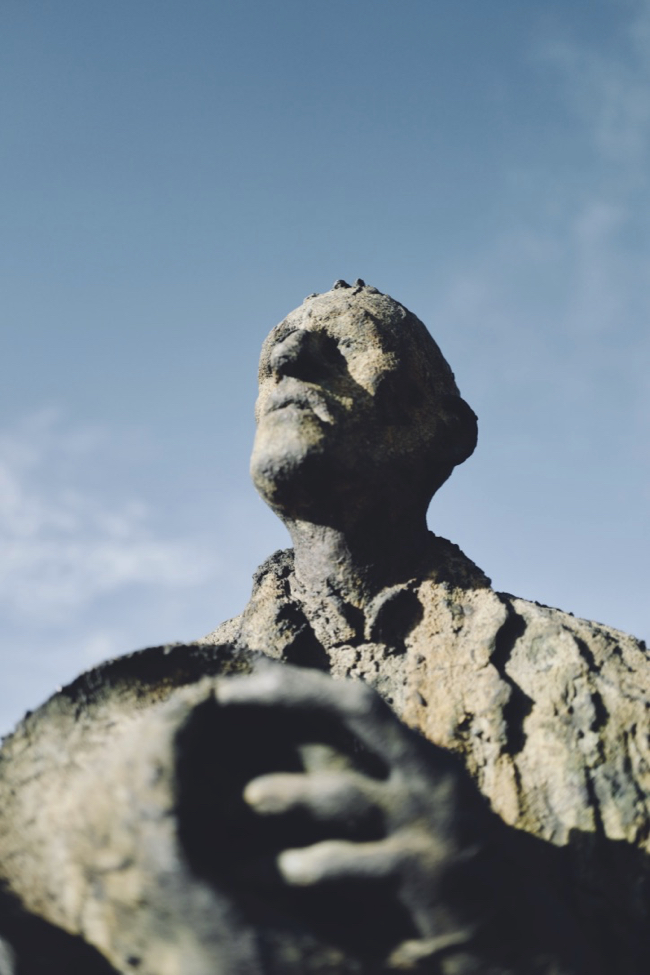
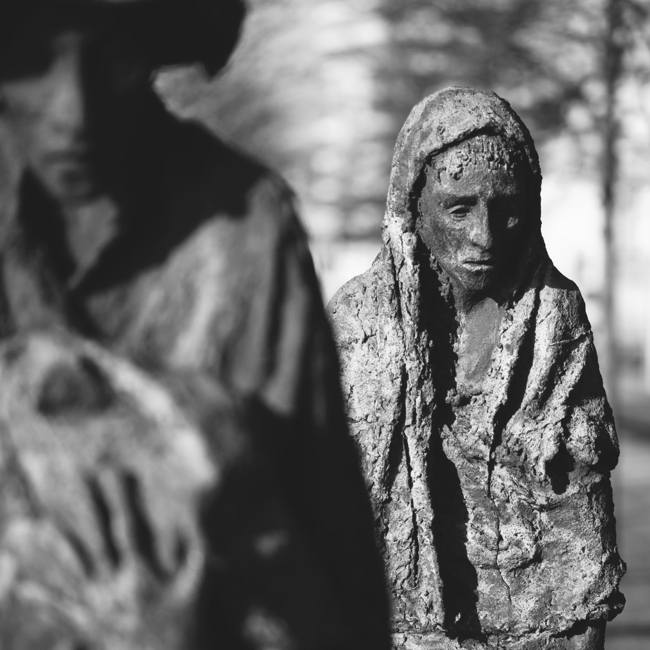
National Gallery Ireland
The National Gallery of Ireland is the National Art Museum of Ireland. The museum opened in 1864 and owned 125 paintings at the time. Thanks to purchases and donations, the current collection comprises approximately 14,000 pieces, including, in addition to 2,500 paintings, prints, furniture and statues.
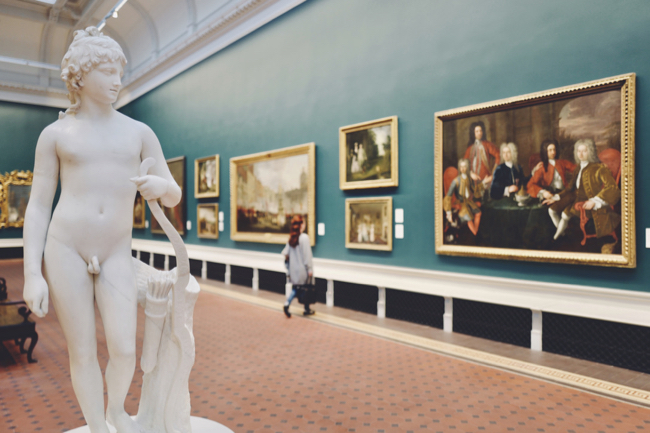
The building has seen several expansions over the years as the collection has grown; the last addition was the Millennium Wing in 2002. Admission is free and you will find works of art by Rembrandt, Vermeer and Jan Steen, among others.


Trinity College
Dublin University is the oldest university in Ireland. The university was founded by Queen Elisabeth I in 1592. You can book a guided tour or walk around the grounds yourself.
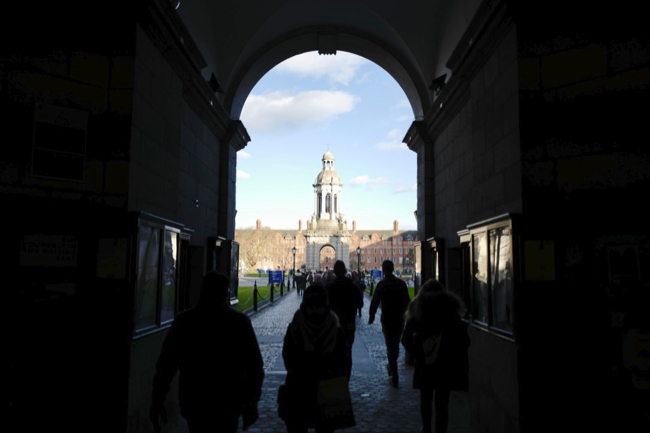
The most famous is the Trinity College Library. This is the largest library in Ireland with 4.5 million books and manuscripts such as The Book of Kells (Manuscript made by monks around the year 800). You can buy a ticket to visit the library and an exhibition about the book of Kells. You can buy an entrance ticket on site for € 12.


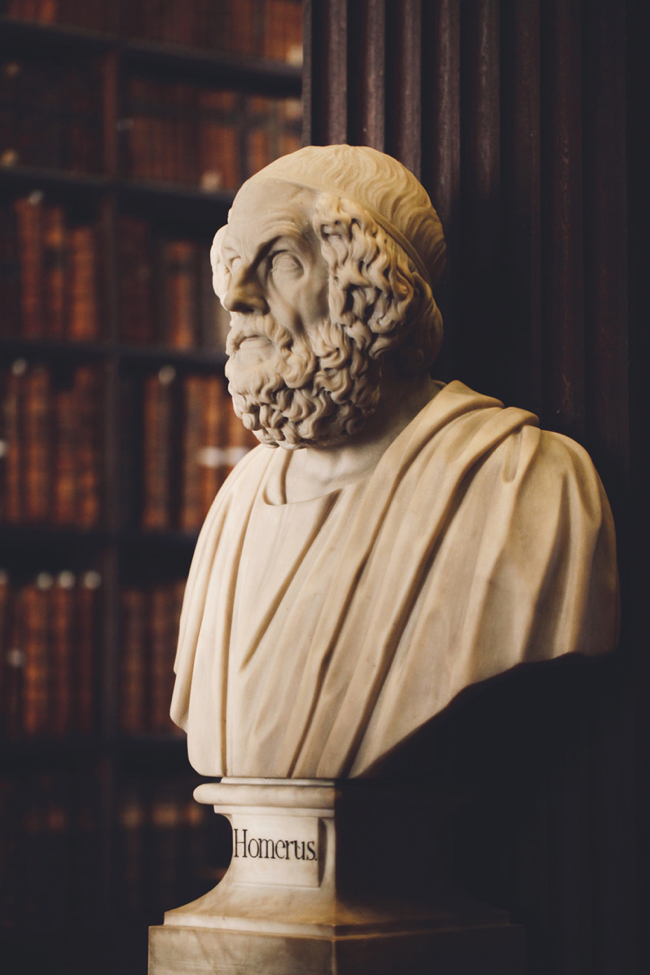
Guinness Storehouse
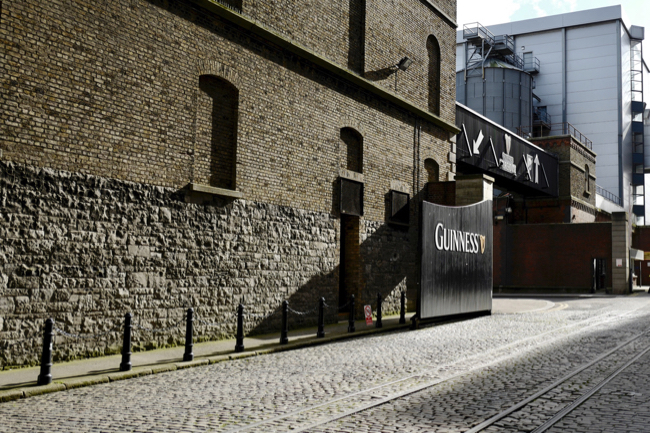
If you like beer you can visit the Guinnes Storehouse. It is a tourist attraction at the Guinness Brewery located in the center of Dublin. In the imposing high storage tower of the old beer brewery, various audiovisual presentations have been made about how beer brewing works. Among other things, it becomes clear to what the Guinness beer owes its black color. Included in the price is a glass of Guinness, which can be enjoyed on the top floor of the Storehouse, with a nice view of Dublin. Many Guinness souvenirs can be bought at the shop on the ground floor.

We have not been inside ourselves. We thought the price was quit high and one of us doesn’t drink alcohol and one of us is gluten intolerant. You can also take beautiful photos of the factory grounds outside.
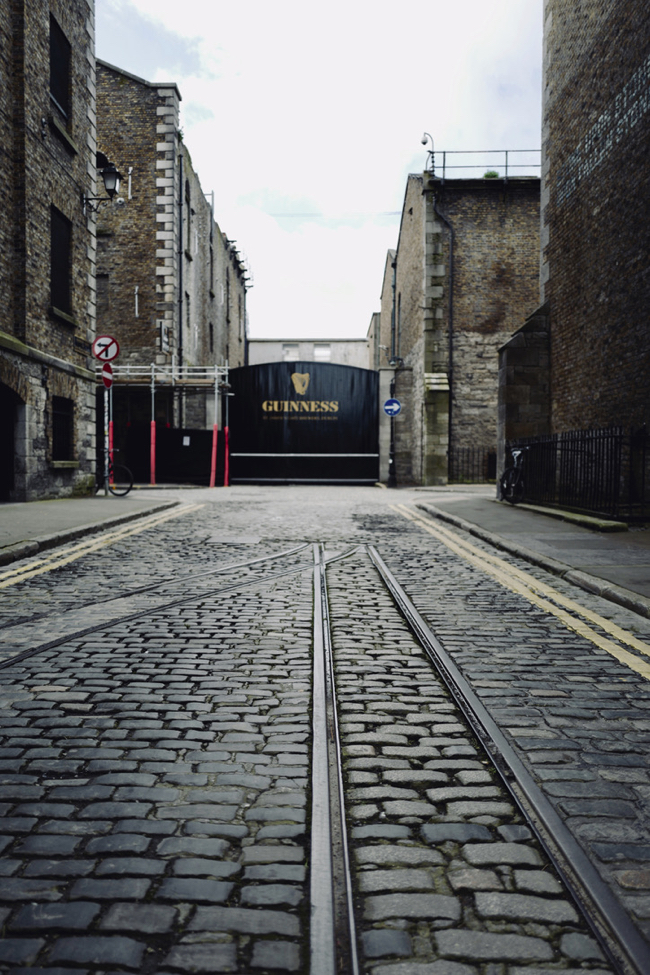
One day in Belfast
If you want to go to Belfast for a day, you can book a tour, but you can also arrange it yourself. That is a lot cheaper and you are with the 2 of you instead of a group. Get the Aircoach from O’Connelstreet. This bus only stops at the airport and then goes directly to Glengall Street in central Belfast. The bus runs once an hour, takes about 2.20 hours and costs € 20 for a return. You can also buy a ticket online or on the bus (cash, debit card or credit card).
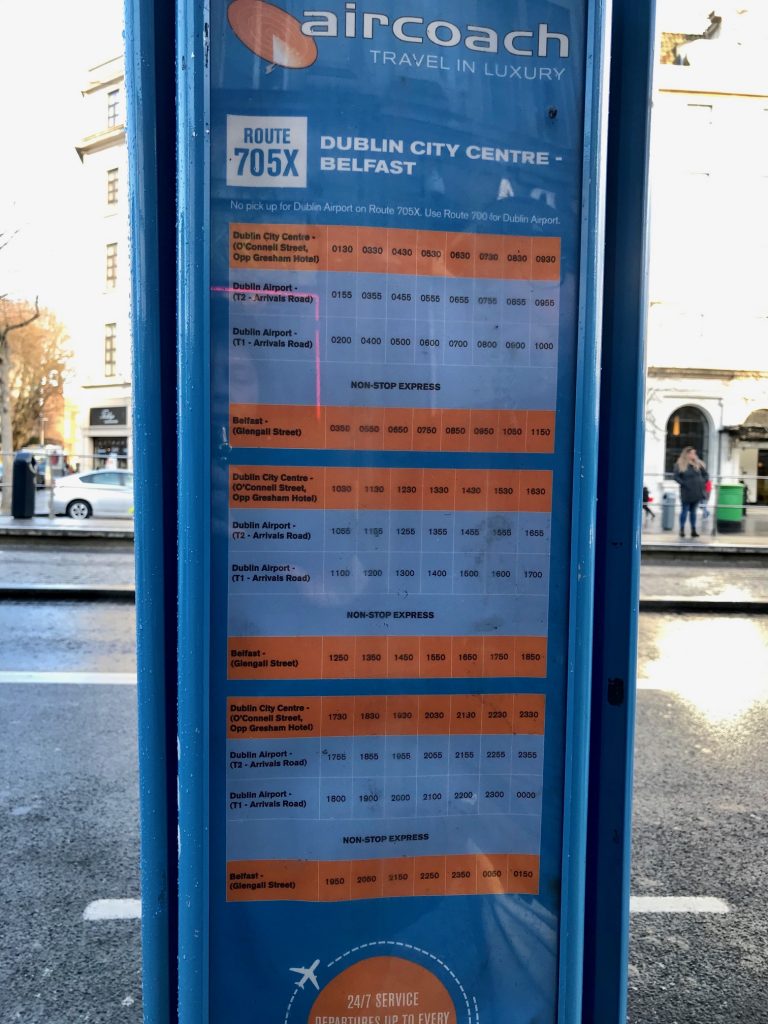
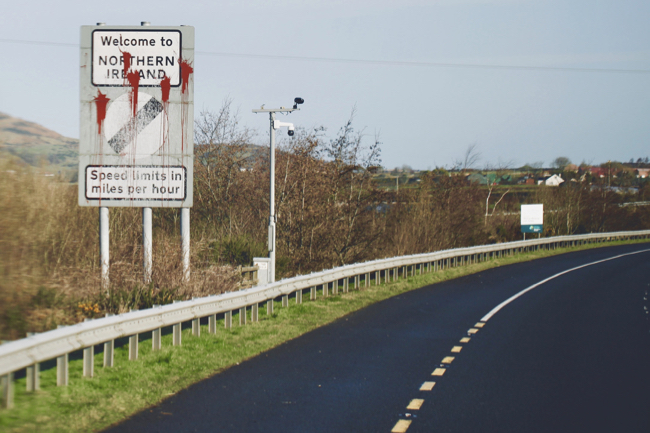
Black Cab tour
We wanted to do a Black Cab Tour through the streets of Belfast where the troubles between the Catholics and Protestants took place. Online you will find many companies that offer these tours for a solid price. We decided to call Paddy Campbell’s Famous Black Cab Tours on the bus to Belfast. This was indicated in our travel guide. In winter it is quite quiet, but in the summer it is wiser to book in advance. We were told by telephone which direction to walk, what color taxi was waiting and that Joe would be our driver. Joe charged £ 35 for 1.5 hours.

The Black cab tour is a tour in a traditional bowler hat taxi along the political murals. Joe told us all about the conflict between the Catholics and the Protestants. The murals tell their own graphic story of what has been called “The Troubles” in Ireland’s recent history. You will also visit the infamous Peaceline, a wall built to separate the two groups, dividing the communities. The Belfasters are allied with the Palestinians and other areas where populations are being oppressed. This is reflected in the murals.

It is impressive to see and hear that there is still tension between Catholics and Protestants today. The gates all but one close in the evening.

Around July 12, the day of the largest orange march (The celebration that William of Orange defeated the English king in 1690), it is very restless. Bonfires are then lit near the peace wall.

Because a lot of alcohol was consumed, things were often thrown over the wall at the Catholics. Therefore, the wall was raised several times.
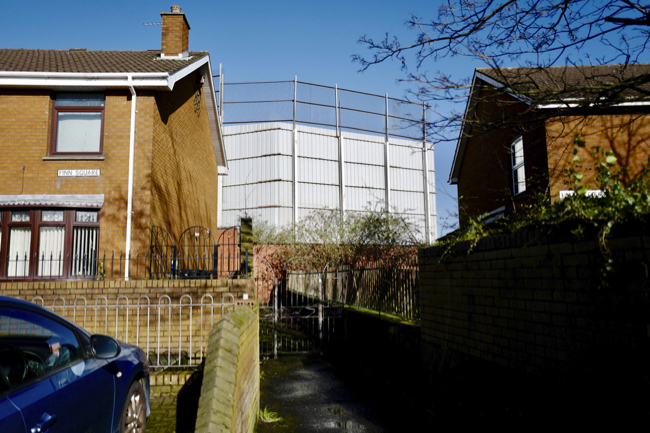
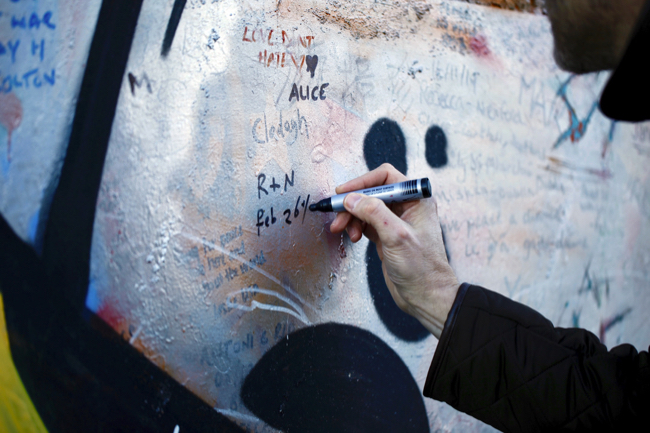
The taxi can then drop you in the center. If you want to go to Titanic Square, you pay an extra few pounds.
Titanic Quarter
The Titanic Quarter is located on the east side of the Lagan. This region is the birthplace of RMS Titanic. A lot of time and money has been invested in reviving the grounds of the former shipyards.

In this area you will also find the Titanic Belfast https://titanicbelfast.com one of the world’s most extensive museums dedicated to the 1911 Titanic voyage.
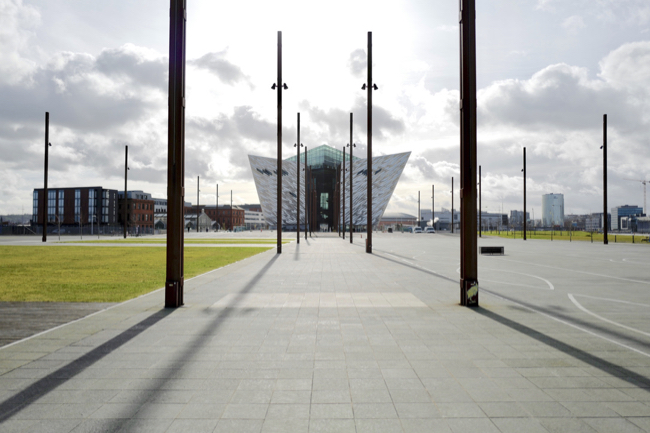
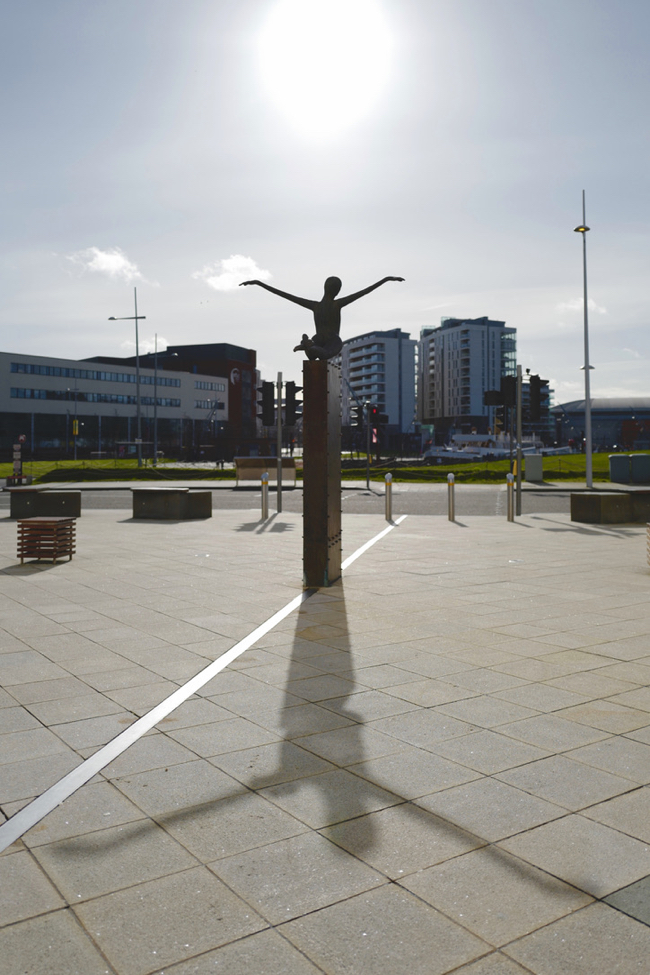
You will walk through the museum on your own, past all kinds of interactive exhibitions about the legacy of the ship and the tragic voyage. For example, you can see how the ship was built, the construction of the steel, the cabins, the location where the ship went into the water, and you also see footage of the ship on the seabed.

From the Titanic Quarter, walk along the quays to the center of Belfast, where the bus departs for Dublin. You cross the river via the Lagan Weir footbridge. Right after the bridge you see ‘Bigfish’, a large ceramic salmon. This salmon is covered with tiles, which show the history of Belfast.
Across the road you will see the Albert Memorial Clock Tower. It dates from 1869 and, like the tower of Pisa, is slightly crooked.
From the Clock Tower, turn left onto Victoriastreet. on the right corner in front of Victoria Square you will find Bittles Bar. The building dates from 1868 and has a special shape. It is on the corner of a street block, it is very narrow on one side.
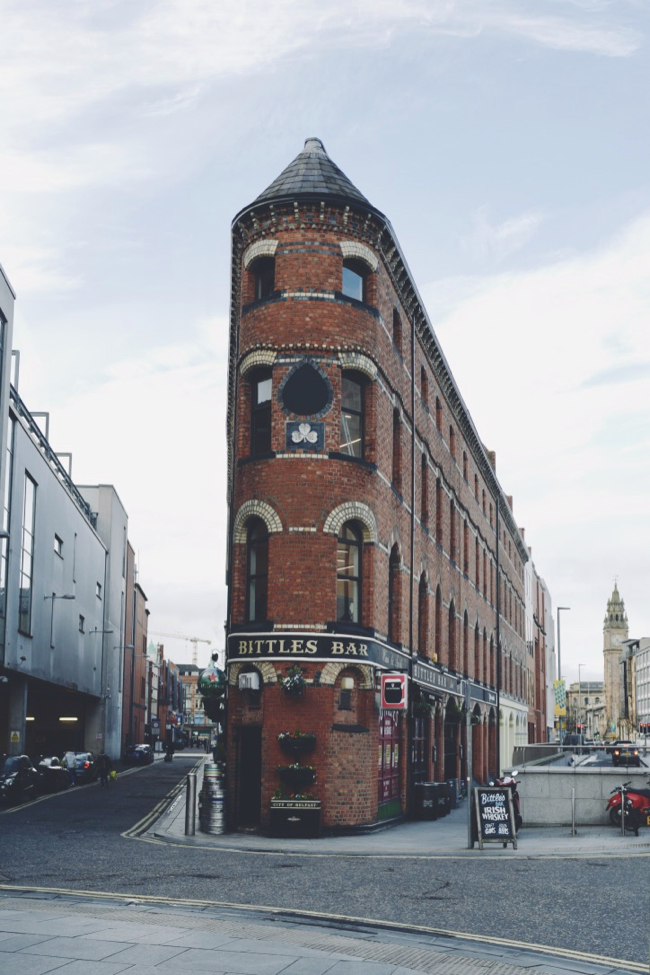
The Victoria Square shopping center is very worthwhile. You will find 70 brands of shops, a cinema and restaurants. The building has a beautiful architecture with a beautiful glass dome. You can take the elevator all the way up for a nice view of the city.

Walk past the pretty City Hall back to the bus stop opposite the bus station in Glengallstreet, where the bus always leaves for Dublin every half hour.
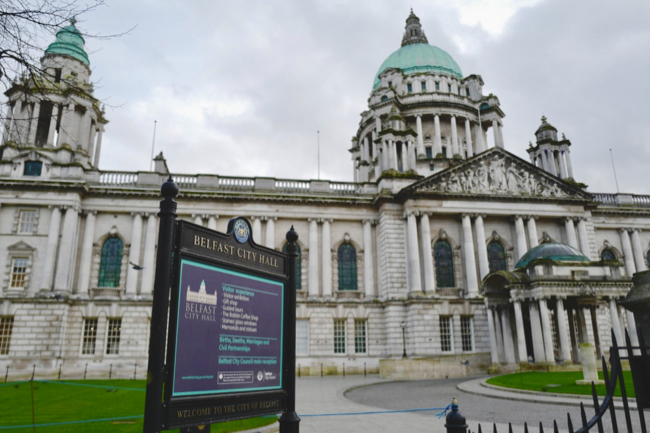
We had booked a hotel in Dublin for 4 nights, but we advise you to combine Belfast and Dublin by, for example, 2 to 3 nights in Dublin and 2 nights in Belfast. Belfast is really worth to visit more than one day.
